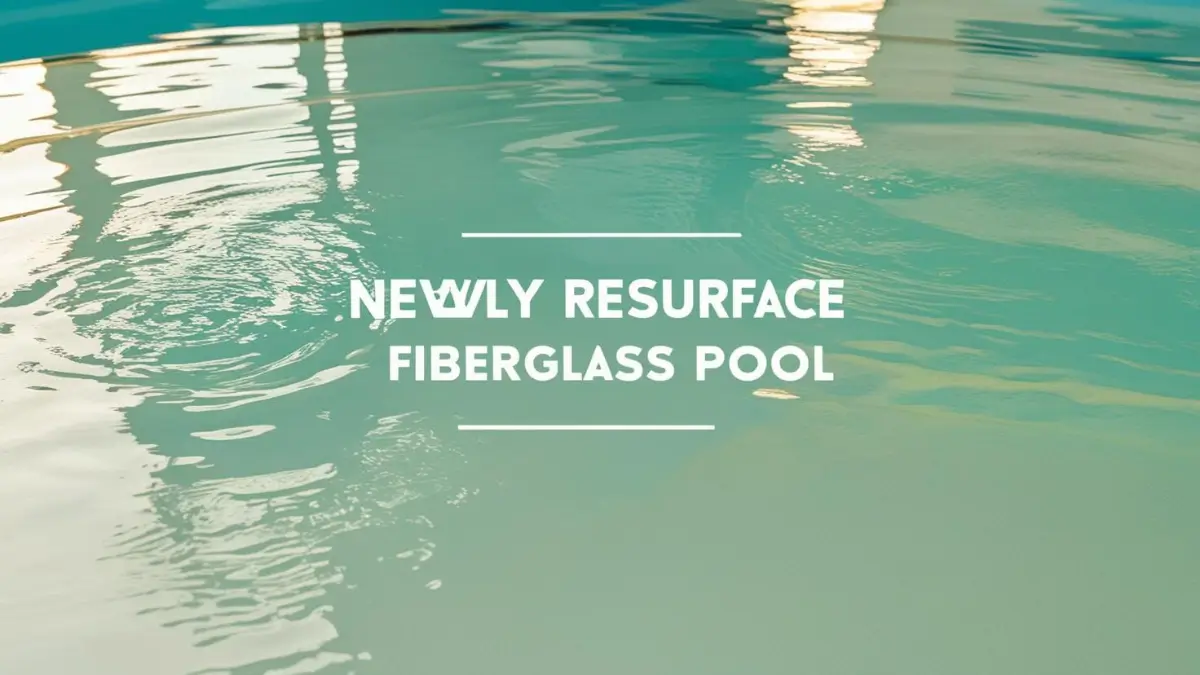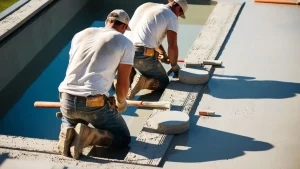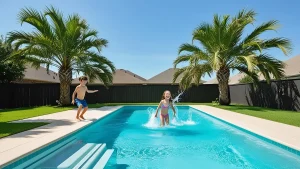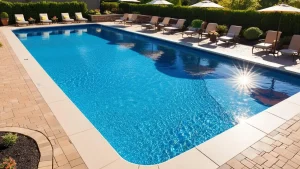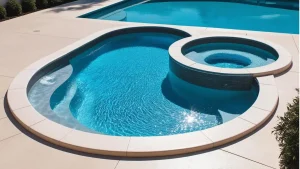Introduction
If your fibreglass pool is starting to show fading, cracks, or even leaks, it may be time for resurfacing. Constant exposure to chemicals, UV rays, and water pressure can cause deterioration, making the pool less appealing and affecting its functionality. Proper upkeep is essential to maintain its strength and prevent further damage.
A fresh resurfacing job can completely rejuvenate your pool, restoring its visual appeal while providing a seamless, waterproof, and durable finish. Beyond looks, resurfacing also fortifies the pool’s structural stability, ensuring a safe and long-lasting surface. It’s an excellent way to amplify the swimming experience, keeping the pool smooth, clean, and inviting.
Whether your goal is to repair existing damage or enhance its efficiency, resurfacing is a reliable solution that can prolong the pool’s lifespan and make it feel brand new again. Having seen the transformation firsthand, there’s nothing more satisfying than watching an ageing pool turn into a sparkling oasis.
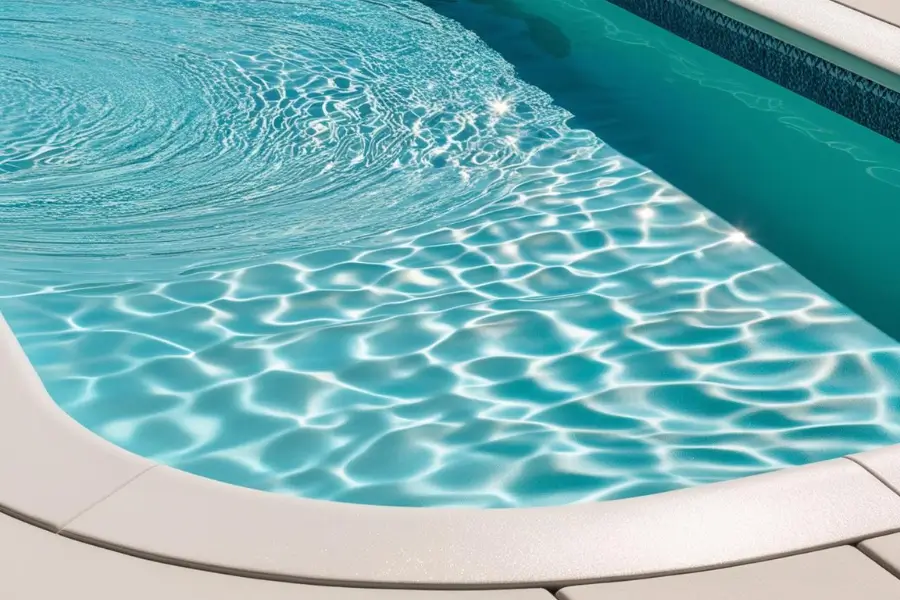
What is Fiberglass Pool Resurfacing
Fiberglass pool resurfacing is the process of restoring and repairing the interior surface of a fiberglass pool to improve its appearance, durability, and functionality. Over time, fiberglass pools can develop cracks, discolouration, rough spots, or even structural damage due to wear and tear, chemical exposure, and weather conditions. Resurfacing helps fix these issues and gives the pool a fresh, smooth finish.
Benefits Of Fiberglass Pool Resurfacing
Some benefits of fiberglass pool resurfacing are discussed here:
- Restores Aesthetic Appeal – Eliminates cracks, discolouration, and rough surfaces, making your pool look brand new.
- Extends Pool Lifespan – A fresh resurfacing job can add years to your pool’s durability and performance.
- Improves Comfort & Safety – Smooth fiberglass surfaces prevent rough spots and potential injuries.
- Prevents Leaks & Structural Damage – Reinforces the pool shell, reducing the risk of costly leaks and cracks.
- Enhances Chemical Resistance – A new surface helps resist chemical damage, reducing maintenance needs.
- Reduces Maintenance Costs – A properly resurfaced pool is easier to clean and requires fewer repairs over time.
- Increases Property Value – A well-maintained pool can boost home value and appeal to potential buyers.
- Improves Water Efficiency – Prevents water loss due to leaks and reduces the need for constant refilling.
- Customizable Finishes – Choose from different colours and textures to give your pool a unique look.
- More Energy Efficient – A smooth fiberglass surface improves circulation, helping the pool retain heat better.
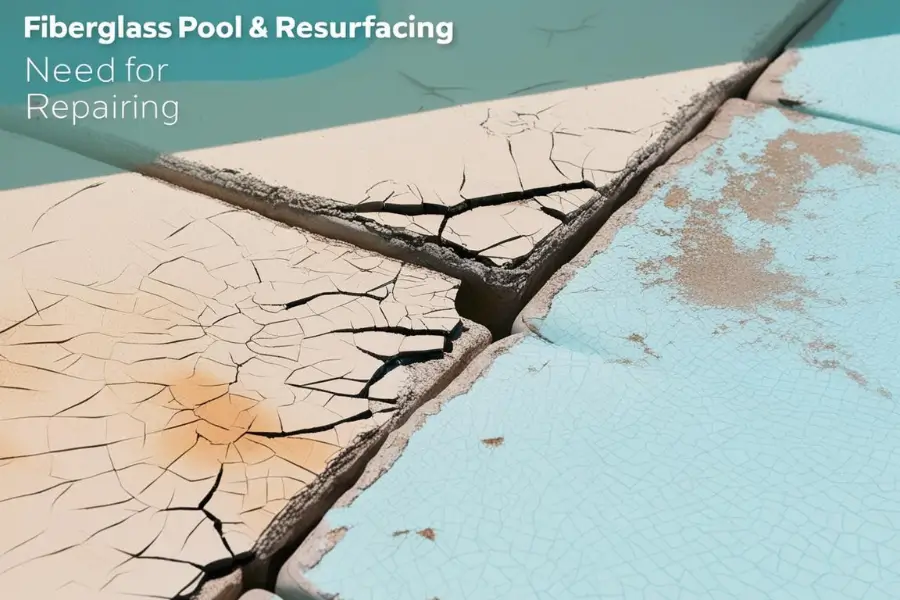
Why Does a Fiberglass Pool Need Resurfacing?
Over time, fiberglass pools go through wear and tear, making resurfacing necessary to keep them in good condition. If left untreated, the gel coat may fade, become rough, or even develop cracks and leaks. Resurfacing restores the appearance, strengthens the structure, and helps prevent costly repairs in the future.
One of the first signs that your pool needs resurfacing is discolouration and fading. Constant exposure to UV rays, changing weather, and pool chemicals can make the gel coat lose its shine and develop chalky spots. A fresh resurfacing job brings back the vibrant colour and glossy finish, making the pool look new again.
A worn-out and rough surface can make swimming uncomfortable. The smooth layer that keeps the pool gentle on the skin wears down over time, leading to skin irritation and an unpleasant feel. Resurfacing restores the smooth texture, making the pool more enjoyable for everyone.
Cracks and leaks are also common as pools age or if the ground shifts. These small cracks can become bigger problems if not fixed in time. Resurfacing strengthens the structure, seals weak spots, and prevents water loss, helping you save on water bills and avoid expensive repairs. It also provides better chemical resistance, protecting the gel coat from chlorine and other pool chemicals, making maintenance easier and more efficient.
Signs Your Fiberglass Pool Needs Resurfacing
If your fiberglass pool starts showing stains, cracks, or blisters, it may be time for resurfacing. A worn-out shell can lead to leaks, rough surfaces, and water chemistry issues, making the pool harder to maintain. Ignoring these problems will only result in higher repair costs, so keeping an eye on these warning signs ensures your pool stays in top shape for years.
When Should You Resurface?
If your pool starts showing signs like cracks, stains, or a rough surface, it’s time to think about resurfacing. Acting early prevents costly repairs, keeps your pool looking great, and ensures a smooth, enjoyable swimming experience for years to come.
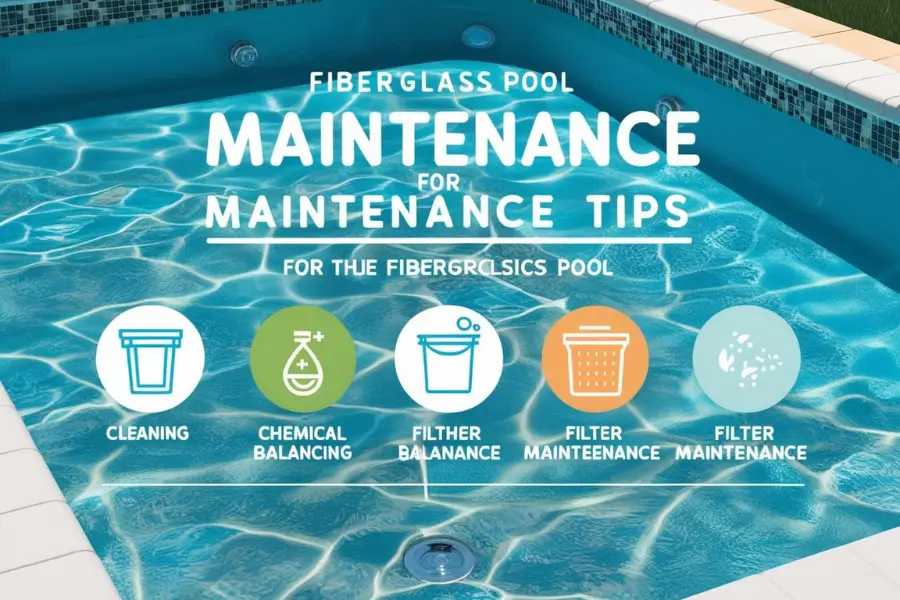
Maintenance Tips for Your Fiberglass Pool
1. Maintain Proper Water Chemistry
Maintaining the right water chemistry is key to keeping your fiberglass pool in top shape. Keep pH levels between 7.2 and 7.6 to prevent surface damage and scaling while maintaining chlorine levels between 1.0 and 3.0 ppm ensures the water stays clean and bacteria-free. Regularly testing your pool water—at least once a week—helps keep everything balanced and makes maintenance much easier.
2. Clean the Filter System
Check and clean the filter system often to keep your pool water clear and flowing properly. Whether you have a sand, cartridge, or DE filter, a clogged system can cause cloudy water and reduce efficiency. Backwash or replace the filter when needed to ensure everything runs smoothly.
3. Avoid Harsh Chemicals & Abrasive Cleaners
To protect the gel coat and extend the life of your fiberglass pool, avoid using abrasive cleaners or harsh chemicals that can cause damage. Instead, stick to fiberglass-safe pool chemicals and use a soft cloth or sponge for cleaning. If stains appear, a gentle baking soda or mild vinegar solution works well without harming the surface.
4. Keep Water Levels Consistent
Check your pool’s water level regularly to prevent damage. If the water is too low, the pump can suffer, while excess water might lead to overflow. If you see rapid evaporation, inspect the pool surface for cracks or leaks to avoid bigger issues.
5. Cover Your Pool When Not in Use
Using a pool cover when not in use helps reduce evaporation, keeps debris out, and protects the surface from UV damage. It also helps retain heat, which can lower energy costs for heated pools.
6. Keep an Eye on Algae Growth
Even though fiberglass pools are more resistant to algae, shaded areas can still collect buildup over time. To prevent this, brush corners and steps regularly, and if needed, use a proper algaecide to keep the pool clean.
How Much Does Fiberglass Pool Resurfacing Cost?
Resurfacing a fiberglass pool can cost between $5,000 and $15,000, depending on pool size, materials used, and the level of damage. A basic gel coat resurfacing is a cost-effective choice, while premium finishes like quartz or ceramic add to the price. DIY kits range from $1,500 to $3,500, but for a durable and smooth finish, hiring a professional is the best option. To get an accurate estimate, consult a pool resurfacing expert.
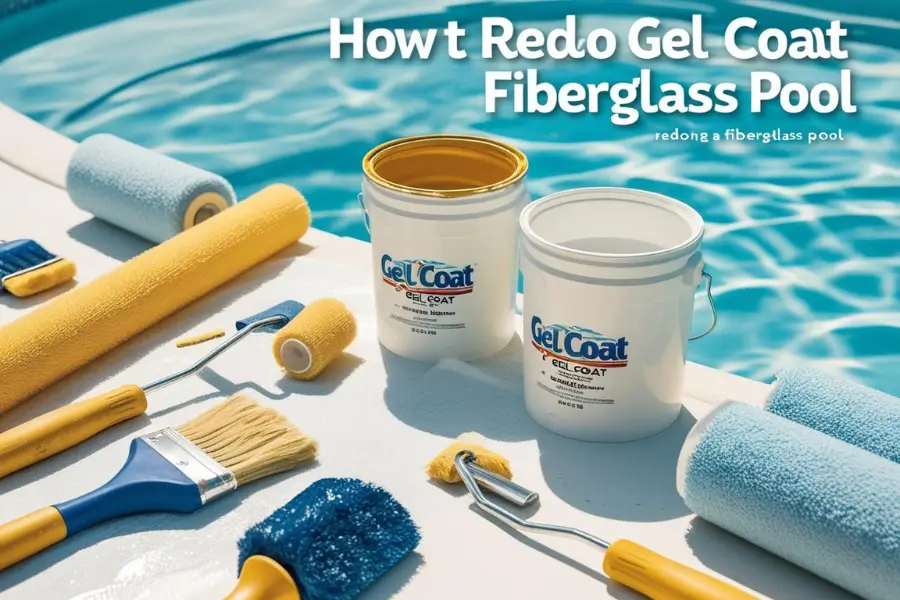
How to redo the gel coat on your fiberglass pool
The gel coat is key to keeping a fiberglass pool smooth, strong, and visually appealing. It acts as a protective barrier while also improving the pool’s appearance. To get the best results, the surface must be properly prepared before applying the new coat. When redoing the gel coat, it’s important to apply it evenly, making sure there are no bubbles or flaws, as these can affect the durability and finish of the pool.
How to choose a fiberglass pool with a quality gel coat
A quality gel coat is key to a fiberglass pool that lasts, standing strong against harsh weather while keeping its color vibrant. To make the right choice, take time to research different options and focus on products that other pool owners trust and recommend for durability.
Professional Resurfacing vs. DIY
Professional resurfacing and DIY depends on your budget, experience, and the pool’s condition.
Professional Resurfacing
Professional resurfacing may cost more ($5,000–$15,000), but it guarantees a high-quality, durable finish. Skilled experts handle repairs, apply a smooth gel coat, and use industrial-grade materials to strengthen the surface. Choosing this method saves time and helps avoid costly errors, ensuring a long-lasting and flawless pool.
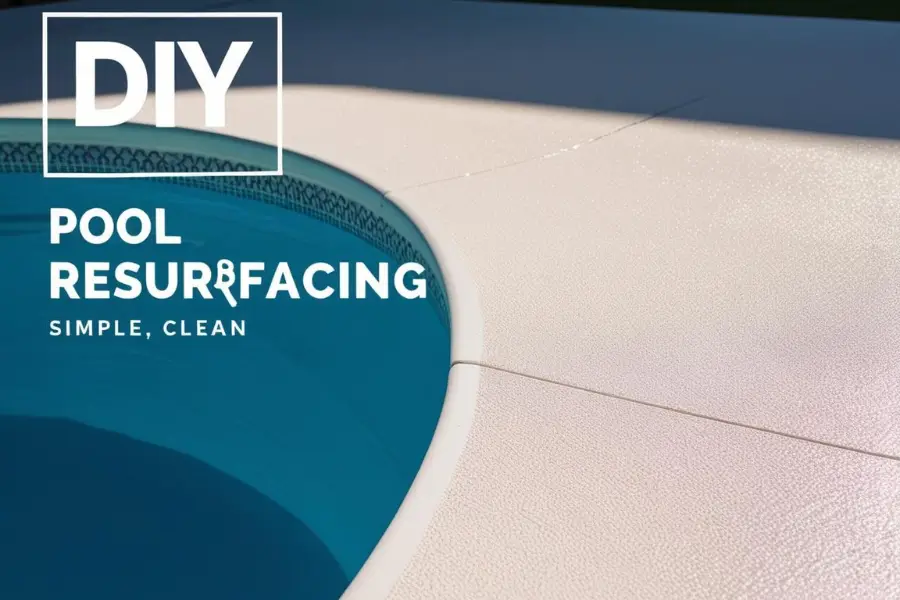
DIY Resurfacing
DIY resurfacing is a more affordable option ($1,500–$3,500), but it requires the right tools and a steady skill level. If not done properly, errors like uneven coating or improper curing can lead to peeling, cracks, and costly repairs. While it works well for minor touch-ups, it’s not the best choice for full resurfacing due to the risk of mistakes.
Conclusion
Fiberglass pool resurfacing is an essential step in maintaining the strength, appearance, and overall functionality of your pool. Over time, wear and tear can lead to cracks, fading, and a rough texture, making it harder to clean and less enjoyable to use. A fresh gel coat not only restores its smooth surface but also strengthens the structure, preventing leaks and costly repairs. Additionally, resurfacing improves chemical resistance, enhances water efficiency, and extends the lifespan of your pool, ensuring long-term enjoyment.
Whether you opt for professional resurfacing or take the DIY approach, ongoing maintenance is key to keeping your pool in great shape. Regular cleaning, balanced water chemistry, and protecting the surface from harsh elements help maintain its look and performance. Resurfacing at the right time keeps your pool safe, inviting, and a valuable part of your home.
FAQs About Fiberglass Pool Resurfacing
Do fiberglass pools need to be resurfaced?
Fiberglass pools are long-lasting, but over time, the fiberglass can begin to deteriorate, leading to a faded or rough surface. Typically, pools between 15 and 50 years old require resurfacing to restore their smooth finish and prevent damage. A premium top gel coat helps extend the lifespan of the pool to 7–13 years, keeping it looking great and protecting it from wear and tear.
How long does it take to resurface a fiberglass pool?
Resurfacing a fiberglass pool usually takes 5–7 days, but unexpected weather conditions can delay progress. In some situations, the process may extend to 14 days, especially if moisture or temperature changes affect curing time.
What is the best material for resurfacing a fiberglass pool?
Gel coat, epoxy coatings, and fiberglass mat with resin are the best choices for resurfacing a fiberglass pool. Gel coat is highly durable and UV-resistant, making it a top option for a long-lasting finish. Epoxy is a cost-effective alternative with strong adhesion, while a fiberglass mat with resin is ideal for extensive repairs. A professional application ensures the best results.
Can I resurface my fiberglass pool myself?
Yes, you can resurface your fiberglass pool yourself, but it takes the right tools, materials, and skill. While DIY resurfacing kits cost $1,500–$3,500, mistakes like uneven coating or improper curing can cause peeling and cracks, leading to costly repairs. For a long-lasting, professional finish, hiring an expert is often the better choice.
What are the signs that my fiberglass pool needs resurfacing?
If your fiberglass pool shows fading, discoloration, or has cracks, blisters, and rough surfaces, it may need resurfacing. A chalky or worn-out gel coat, along with water levels dropping due to leaks, are clear signs that resurfacing is necessary to bring back its durability and appearance.

